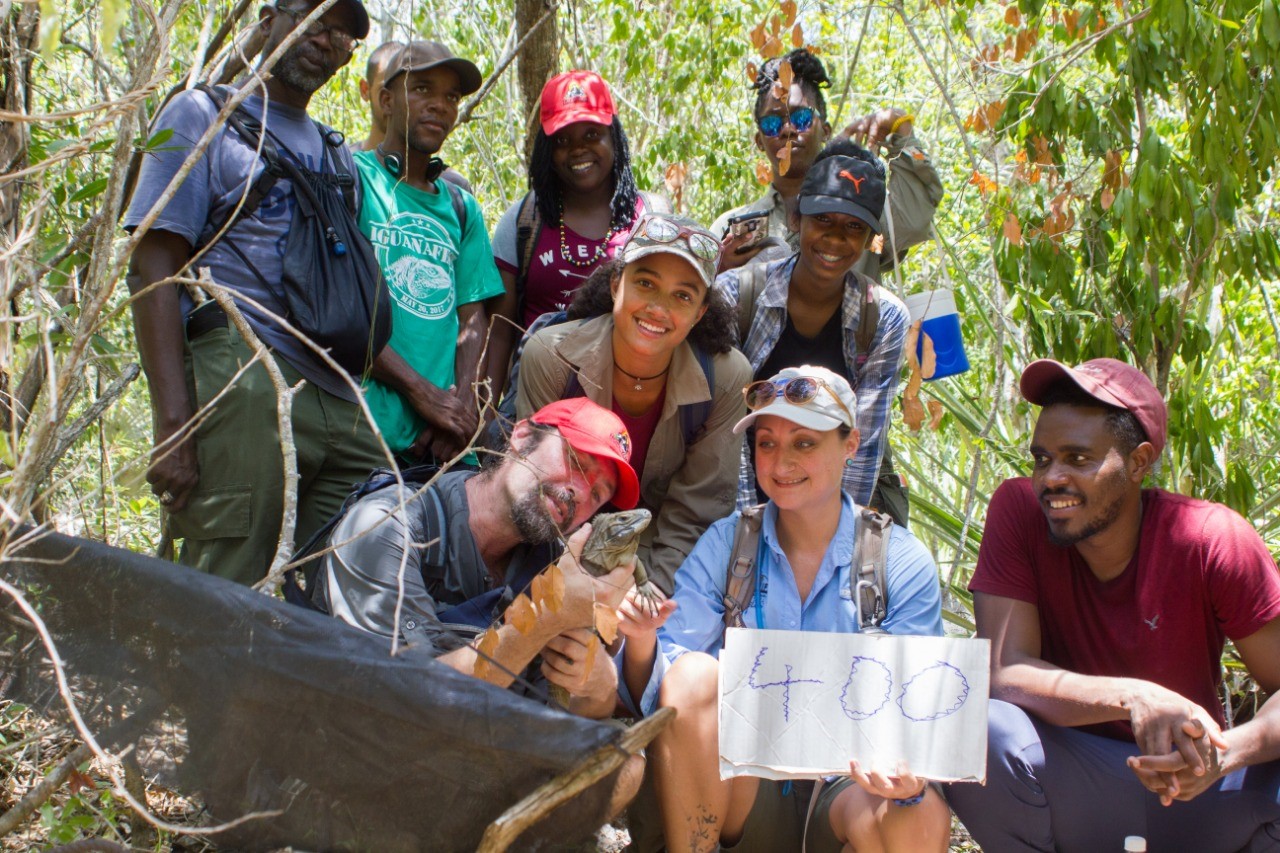Environmental Conservation
Coastal and Marine Assessments
The NEPA Coastal and Marine Monitoring Framework includes Coral Reef Health, Sea Surface Temperature and Beach Profiles.
Coral Reef Health
Jamaica has roughly 1,240 square kilometres of coral reef area. The Coral Reef Health Index measures reef resilience and is based on assessments of 29 established reef monitoring sites across the island. The Agency utilizes the Reef Check methodology and photographic surveys to assess the substrate composition, while the Atlantic and Gulf Rapid Reef Assessment (AGRRA) methodology is used to collect data on fish biomass. The Annual Trend Analysis looks at herbivorous fish, commercially important fish species, coral cover and macro-algal cover. The Agency has been monitoring reef health since 2000 and the overall average index calculated for all sites continues to point to Jamaica’s reefs being in ‘poor’ condition.
Coral Reef Action Plan
In 2019, the National Environment & Planning Agency (NEPA) published “Action Plan for Corals and Reefs in Jamaica 2018-2023 (APCAR)”. The action plan aims to provide clear and targeted actions to build resilience in Jamaica’s coral reef ecosystems and in the people that rely on them. The plan purports strategies and actions that are formulated based on guiding principles which integrate both biological and social resilience in line with the National Strategy and Action Plan on Biological Diversity in Jamaica (2016-2021) and Aichi Targets (related to coral reef conservation) outlined in the Convention on Biological Diversity (CBD) Strategic Plan 2012.
Sea Surface Temperature (SST) allows for forecasting of bleaching events. High temperatures (temperatures exceeding 30 degrees Celsius) experienced for extended periods cause coral bleaching and makes corals more susceptible to diseases. SST monitoring commenced in 2013 under the EU/UNEP/GOJ funded Climate Change Adaptation and Disaster Risk Reduction Project. Twenty-seven (27) SST monitoring sites have been established in 8 localities (Port Royal, Portland Bight, Bluefields, Negril, Montego Bay, Discovery Bay, Ocho Rios and Portland) incorporating 3 Marine Parks, 2 Protected Areas and 6 Special Fisheries Conservation Areas.
Sea Surface Temperature
Beach profile assessments have been conducted by the Agency since 2000 using the Emery Method. Beach profiles are measured on a quarterly basis to assess erosion and accretion of 6 beaches around the island including tourist beaches, undeveloped beaches, high wave energy beaches and beaches on the north coast and the south coast.
Beach Profiles
Watershed Management
For management purposes, Jamaica is divided into twenty-six (26) Watershed Management Units (WMUs) comprising all the land from the mountains to the sea; with over sixty percent of the Island having an altitude of over 230 metres above sea level and containing over 100 streams and rivers.
These WMUs are essentially composites of watersheds which fall within ten (10) hydrological basins (regions). The lands in the upper parts of the WMU are characterized by steep slopes usually in excess of 20 degrees. Limestone derived soils cover about 65% of the watersheds and the remaining areas are composed of soils derived from weathered igneous and metamorphic rocks.
The Government of Jamaica seeks to articulate a coherent policy on watershed management in Jamaica and to set out the principles that should guide decision-making by agencies having functions in relation to watersheds. The Policy builds on the already agreed National Integrated Watershed Management Programmatic Framework and supports the continuing efforts to define and clarify roles, responsibilities, programmes and actions.
The National Environment and Planning Agency implements management strategies through various programmes. The Agency is currently implementing management solutions under the following:
- The Watershed Area Management Mechanism (WAMM), and
- The Yallahs/ Hope River Watershed Management Project
The WAMM is earmarked for implementation in all WMUs, while the Yallahs/Hope River is restricted to those two WMUs. They both seek to achieve watershed protection through sound land husbandry that will effect changes to the attitude of citizens with the primary outcome being increased soil conservation, increased vegetative cover, increased water yields and improved water quality.
Wildlife Conservation and Mangament
Jamaica boasts a very high rate of endemism; approximately 784 species of plants are endemic to the island and over the years Jamaica has put in place measures to conserve its plant diversity. In 2010, the national development plan, Vision 2030, was prepared with four national goals and fifteen national outcomes to be met by 2030. The conservation of plant diversity falls under Goal 4 which states, “Jamaica has a healthy natural environment”. There is also a draft of legislation, policies, plans and international conventions and treaties that support the conservation of Jamaica’s plant diversity, including the Watershed Protection Act (1963), which prohibits the destruction of vegetation in watershed areas, the Beach Control Act (1956), which facilitates protection of marine plant species, and the National Strategy and Action Plan on Biological Diversity (2003), which includes strategic actions to develop and implement recovery plans for threatened plant species.
Plant Conservation Strategy
Additionally, Jamaica’s Plant Conservation Strategy is the country’s comprehensive response to conserving and protecting plant diversity. It is aligned with the 16 targets of the Global Strategy for Plant Conservation (GSPC). It outlines actions to conserve and manage Jamaica’s plant species for the benefit of future generations. Preparation of the Strategy also fulfils Jamaica's obligation to the Convention on Biological Diversity to implement the GSPC.
In recent years The Agency has increased its efforts in the areas of ex-situ and in-situ conservation with the use of tissue culture showing great potential for ex-situ conservation. Target species for ex-situ conservation include orchid species which aligns to conservation measures documented in ‘A Draft Policy Towards Orchid Conservation in Jamaica’.
The Agency actively monitors species that are protected under the Wild Life Protection Act. Conducting wildlife population assessments provides important information for wildlife management, contributing to the conservation of the species. Information on a species can be collected through ecological surveys, questionnaires, literature reviews and reports from the public. The Agency’s long-term monitoring programs have focussed on the implementation of various conservation measures documented in species management or actions plans. Currently these plans are in place for species such as the Jamaican Iguana, American crocodile, Jamaican Boa, Bats, Sea turtle, Swallowtail Butterfly, West Indian Manatee, Yellow-billed and Black-billed parrots.
Fauna Wildlife Conservation Programme
To ensure the protection of Jamaica’s wildlife, the Agency responds to wildlife reports. In certain cases, where the wildlife has become displaced or found in a human-populated area, a decision might be made to relocate the animal to a more suitable habitat in keeping with guidelines for the management of the species. The Agency always strives to ensure both the safety of the animal and the people and promotes appreciation towards our wildlife and encourages coexistence through its public awareness and education programs.
Iguana Conservation

Crocodile Conservation

Members of the Jamaican Iguana Recovery Group (JIRG) releasing the 400th Iguana from the Headstart program at Hope Zoo back into the wild.
Environmental Officers ID tagging a young American crocodile after it was retrieved from a neighbourhood in Kingston. The animal was later transported to a wildlife facility.
Invasive Alien Species
In collaboration with the Invasive Alien Species Working Group (IASWG), The Agency identifies and implements measures relating to invasive alien species management including the publication of the quarterly ‘Invasive Species Newsletter’. In recent years the Agency has focused its efforts on increasing public awareness on IAS species including the white-tailed deer, green iguana and ring-necked parakeet. The Agency has also increased engagement over social media platforms with the aim of sensitizing persons about IAS and encouraging reports of sightings of IAS.
